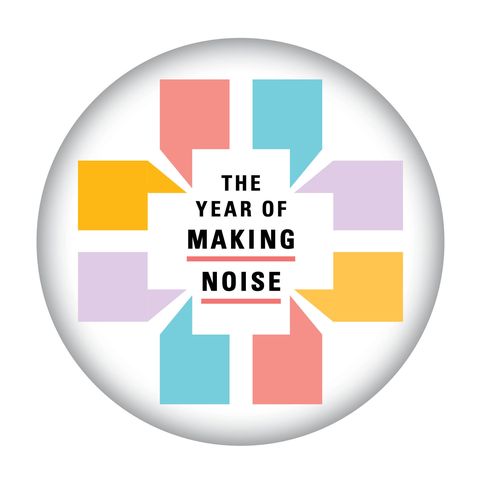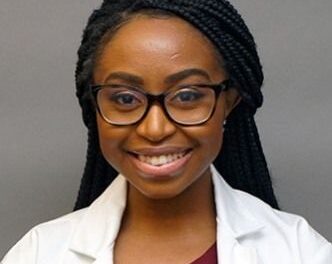4,300 women. That’s how many deaths the U.S. will see this year from a form of cancer that is entirely avoidable. And in total, this single year, around 14,000 women will be diagnosed with it.
The disease is cervical cancer, and unlike with most types of cancer, there are effective screening tests to prevent it: Pap tests, to detect abnormal cervical cells, and tests for the high-risk types of human papillomavirus (HPV), the virus that causes most cases. There’s also the ability to remove precancerous tissue, as well as a vaccine that offers nearly 100% protection against the HPV infections that cause cervical cancer, which has been available for the past 17 years.
“This is the one cancer we can prevent,” says Denise Howard, M.D., chief of obstetrics and gynecology at New York-Presbyterian Brooklyn Methodist Hospital in New York City. “We have all these tools, but our numbers have stayed the same when they should be dropping. At this point, cervical cancer should be a ‘never’ event.”
This story is part of our Year of Making Noise, Prevention’s series dedicated to helping you speak up for your health and change your life. We’re taking a close look at health issues that are ignored and overlooked and making sure every person is heard. It’s time to get the health care you deserve.
In fact, rates of cervical cancer have stubbornly stagnated in the U.S. after tumbling steadily from the 1970s until about 11 years ago. In 2012, overall rates started to plateau, says research published in the Journal of the American Medical Association, except for women ages 30 to 34, for whom rates started to shift upward that year and have ticked up by 3% every year since. And no one really knows why.
One thing is clear in many cases of the disease: “Women are getting cervical cancer because they are falling through the cracks in our health care system,” Dr. Howard says. Kate Weissman, 38, is one example. When she got the call telling her she had cervical cancer eight years ago, “I collapsed on the floor, sobbing,” she says. “I remember thinking, I’m not ready to die.”
When she was in her 20s, her gynecologist had told her she had HPV but said it rarely turned into cervical cancer. Still, Weissman diligently got Pap tests every year. While the results were sometimes abnormal, she says, no one seemed overly concerned. In 2015, she went off the Pill to prepare to donate a kidney to her husband, but her periods became wildly irregular and she started bleeding after intercourse. It was only after these issues emerged that her new doctor took a closer look, scraped off some cells for a biopsy (a procedure called colposcopy), and made the diagnosis. “It was a mistake that they didn’t do it sooner,” Weissman says. She had to endure a grueling regimen of radiation and chemotherapy.
The rise in late-stage cervical cancer
Doctors are also seeing another ominous trend: Rates of advanced cervical cancer, which has a five-year survival rate of just 19%, climbed 1.3% a year between 2001 and 2018, data show. And older women, a group that’s often overlooked, make up an alarming percentage of these late cancer diagnoses, according to University of California, Davis, researchers.
“One in five cervical cancer diagnoses is in a woman over 65, and more than 70% of those cases were late-stage,” says study author Julianne J.P. Cooley, a senior statistician at UC Davis Health. “We see women in their 60s and 70s present with cervical cancer and they hadn’t had a Pap test in 20 years,” Dr. Howard says. “They didn’t go back to the gynecologist after they had their babies, and their primary care doctors don’t stress the importance of screening.”
Such women may have been exposed to HPV by a partner—such as a new sexual partner after a divorce—or harbored a slow-growing cancer that festered over time. “But nobody should be diagnosed at a late stage with this disease,” says Cooley.
While cervical cancer rates in the U.S. have stagnated, other advanced countries, including the U.K., Sweden, and particularly Australia, are seeing the opposite trend.
With some of the lowest rates of cervical cancer incidence and mortality in the world, Australia is on track to eliminate the disease by 2035. The country has had robust screening in place since 1991 and had already halved rates for women 25 and older by 2010. Plus, a free national HPV vaccination program, introduced in 2007, achieves high rates of protection for both men and women. Some developing nations are also making remarkable strides. Rwanda is expected to be the first African nation to eliminate the disease by expanding testing, using community health workers to raise awareness of it, and vaccinating all 12-year-old girls.
The discrimination factor
Another group disproportionately affected: Black women, who are 41% more likely than white women to develop the disease and 75% more likely to die from it. Why? Black women are less likely to get screened for cervical cancer than white women, according to new research in the American Journal of Preventive Medicine. And among those who got any type of screening test, Black and Hispanic patients were more likely to receive only a Pap test and not HPV testing, though co-testing is recommended, and follow-up rates after abnormal results were low for all groups.
Tiera Wade, 42, an artisan jewelry designer in Akron, OH, believes racial bias was a factor in her late cervical cancer diagnosis in 2020. For years, her Pap tests showed abnormal cervical cells, called dysplasia (a precancerous condition), which her doctor removed several times, but the condition persisted. “No one explained the significance of it,” says Wade, who was a single Black mother. She also felt shamed by her provider. “He assumed I had multiple sexual partners and talked down to me like, ‘You did this to yourself,’” she says.
Wade later found out that a white friend with similar problems had seen the same doctor and not only was not subjected to his demeaning attitude but got reminders in the mail and even a phone call asking her to follow up, while Wade perceived no sense of urgency from the office about making her appointments and missed some years.
Not until Wade had trouble getting pregnant with her new husband a decade later did her doctor refer her to a gynecologic oncologist—without telling her she had cervical cancer. “The oncologist said, ‘I’m so sorry anybody let you get this far,’ ” she says. Though now free of the disease, she feels betrayed by the physician who once oversaw her care. “He delivered two of my babies,” Wade says. “And I had dysplasia the whole time.”
What went wrong?
There are other key reasons behind the scary news about cervical cancer:
Women are unclear about screening
The percentage of women overdue for cervical cancer screening rose from 14% in 2004 to 23% in 2019, with many reporting that they didn’t know they needed a Pap test or what it represented, per research from the University of Texas Houston School of Public Health. Awareness that HPV causes cancer has also declined, data shows.
Women often don’t know the current screening guidelines, which isn’t surprising—these guidelines have changed in recent years, shaped by researchers’ evolving understanding of the patterns of disease. Women should get Pap tests starting at age 21, and those 30 to 65 (and older, if they have new sexual partners) should get both an HPV test and a Pap test every five years. Women of all ages should have pelvic exams on a regular basis even if they’re not getting a cervical cancer screening in the same year. Says Dr. Howard, “I’m often surprised by what I find during the speculum exam.”
Some people are fearful about vaccines
The tepid uptake level of the HPV vaccine since it was rolled out in 2006 also plays a role. “Back then I had hoped that with strong adherence to vaccination and screening, in 20, 30 years I would never see a case of invasive cervical cancer in my practice again,” says John Chan, M.D., a gynecologic oncologist at the California Pacific Medical Center. Though rates of cervical cancer in 20- to 24-year-old women dropped by 65% from 2012 to 2019, suggesting that the vaccine is having an impact, it’s not as big a drop as public health officials had hoped for.
The vaccines target the strains of HPV that confer the highest risk for cervical cancer and are recommended for females and males at ages 9 to 12; getting vaccinated before exposure to HPV allows the vaccines to be most effective in thwarting future infection. The vaccines also protect against anal, vulvar, vaginal, throat, and penile cancers.
But many parents refuse them for their preteens because of safety worries or the fear that vaccination will promote sexual activity—two common misconceptions, says Sean O’Leary, M.D., M.P.H., a professor of pediatrics at the University of Colorado School of Medicine and Children’s Hospital Colorado who studies barriers to vaccination. Just 61% of adolescents are up to date on HPV vaccination, compared with greater than 90% for other childhood vaccines like those against measles and polio. “It’s a tragedy, because there are people who are going to get cancers that could have been prevented,” he says.
After testing, there’s inconsistent follow-up
The lack of follow-through after abnormal Pap or HPV test findings is a particular bugaboo. Some infections clear on their own, but the failure to take the appropriate next step, whether it’s getting a biopsy or having cells removed, could be responsible for up to 40% of cervical cancer cases, research suggests.
Women may not follow up for a number of reasons: They might have lost their insurance, moved, or not received or responded to notifications of abnormal screening or biopsy results. And some clinics and practices don’t do enough to draw women back to the office for additional tests or procedures. One study found that some women needed three reminders before they followed up.
Megan Clarke, Ph.D., an investigator with the National Cancer Institute, thinks there should be better systems for tracking women and recalling them to a clinic. And providers don’t always follow the recommended guidelines after a patient has a positive Pap test or HPV test. Either of those results should prompt a follow-up evaluation, but when a woman doesn’t have both—a Pap showing abnormal cervical cells plus a positive HPV test—she is less likely to receive follow-up testing, found a 2021 statewide study in New Mexico. Even when women did have both, 31% received no follow-up testing at all.
How we can demand change
Cancer survivors are starting to make noise about cervical cancer, one of the most preventable kinds. Some are doing that via the Cervivor network, an advocacy and support organization that raises awareness about cervical cancer; in one of its programs, Cervivor School, cervical cancer patients learn to tell their stories effectively, and advocates can visit their site to find ways to support their work. Another group, the National Cervical Cancer Coalition (NCCC), offers a social media tool kit to promote prevention.
“I want to educate women on how to advocate for themselves to get the right diagnosis faster,” says Weissman, who is active in the Cervivor group. “No one needs to get this cancer, much less die from it.”
Protecting yourself from cervical cancer
Consider getting the HPV vaccine if you didn’t get it as a preteen. It offers some protection even after exposure to HPV and may also benefit some people ages 27 to 45. Start getting Pap tests at age 21, and get one every three years until age 29. At 30, you should start receiving a Pap test and HPV tests every five years.
Always ask what your HPV status is (i.e., whether you have it and whether you have high-risk types like HPV 16 and HPV 18), and keep a record of the results. If you don’t hear back from your provider, check back.
If you get abnormal Pap or HPV test results, the course of action depends on the degree of threat. Your doctor may suggest monitoring or a follow-up procedure called a colposcopy, which includes a biopsy. If higher-grade dysplasia is found, it should be removed. “If a biopsy is done, you should be told how results and next steps will be communicated,” says Sangini S. Sheth, M.D., an associate professor of obstetrics, gynecology, and reproductive sciences at Yale School of Medicine.
Another cancer crisis for women
The cervical cancer crisis isn’t an anomaly. Cases of endometrial, or uterine, cancer in the U.S. have been rising steadily over the past few decades among all women. About 66,200 new cases are expected to be diagnosed this year, and around 13,000 women will die from this cancer. Unlike with cervical cancer, no screening test can catch uterine cancer early.
A higher proportion of those with the cancer are Black, and Black women are twice as likely as white women to die from it. Also, Black women have a higher risk of getting a particularly lethal type called non-endometrioid uterine cancer. Research hints that epigenetic changes—alterations in gene function resulting from the stress of multigenerational trauma—could be behind these aggressive cancers.
The strongest risk factor for endometrial cancer in all women is obesity—and the average weight of American women, and Black women in particular, has been climbing in recent decades. “Peripheral fat produces estrogen that changes the lining of the uterus in ways that can lead to cancer in some women,” says Mark Einstein, M.D., professor and chair of obstetrics, gynecology, and reproductive health at Rutgers New Jersey Medical School in Newark.
One reason for the disparity in outcomes: A greater proportion of Black women experience a delay in diagnosis. “In cancer, delays kill,” says Dr. Einstein. Studies show that when uterine cancer is found early, before it spreads outside the uterus, the five-year survival rate is 95%. Women of color are also less likely to receive guideline-recommended care than other groups, and they get referred for surgery less often no matter what the stage of their cancer—both signs of bias in the medical profession.
“In my experience, another major reason Black women are doing worse is because they may not have been listened to by their doctor,” says Ebony Hoskins, M.D., a gynecologic oncologist at MedStar Washington Hospital Center in Washington, DC. “Cultural bias and/or racism may play a role in receiving standard medical care.”
That was Susan’s story. The 64-year-old financial planner in New York City, who is Black, worried when she noticed blood on her underwear one day in 2021. Her gynecologist put her on steroids to stop the bleeding, but it got worse. Not only were Susan’s concerns dismissed, but the steroid dosage was increased, she says. Weeks later she needed an emergency blood transfusion due to severe blood loss, then got the crushing news that she had had endometrial cancer all along.
Here’s why this is particularly shocking: In postmenopausal women, bleeding is the most common uterine cancer symptom; it occurs in approximately 90% of patients. Yet many women—and even some doctors—don’t appreciate the potential threat. “Any bleeding after menopause is abnormal,” says Dr. Hoskins. “Periods don’t ‘come back.’ ”
Heavy or irregular bleeding before menopause can also be a tip-off, yet unusual bleeding patterns are common in the lead-up to menopause, and this overlap may lead to delays in diagnosis. Other signs at any age: difficult or painful urination, pain during intercourse, and pain and/or mass in the pelvic area.
Many uterine cancer survivors are part of a growing movement to raise the profile of uterine cancer, particularly among women of color. Susan is now an ambassador for the Endometrial Cancer Action Network for African-Americans (ECANA), which spearheads research and increases awareness. “Some patients haven’t even heard of uterine cancer when they are diagnosed,” she says. “Advocacy is needed.”

Beth Howard writes about health and psychology from North Carolina. Her mother is among the 44 million caregivers in this country.







